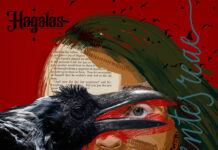Musicalypse has covered a few gigs that feature orchestras, but what about the symphonies themselves? We confess that it’s sadly not something we’ve done before. So, when Underscore Productions announced Score: Orchestral Game Music as performed by the LAHTI SYMPHONY ORCHESTRA on April 28th, 2016, we had to be there to check it out.
Want to read more? Go check out the full live report here.

Setlist
1. Journey – I Was Born for This (Austin Wintory)
2. Assassins Creed IV Suite (Brian Tyler, arr. & orch. Andreas Hedlund)
3. Sonic the Hedgehog – Medley (Masato Nakamura, orch. Andreas Hedlund)
4. L.A. Noir – Main Theme (Andrew Hale, orch. Simon Hale)
5. Unforgotten & Halo Main Theme (Martin O’Donnell & Michael Salvatori, arr. Ingar Karkoff)
6. Super Mario Suite (Koji Kondo & Mahito Yokota)
-intermission-
7. Bloodborne Suite (Ryan Amon, arr. & orch. Andreas Hedlund)
8. Final Fantasy IX Suite (Nobuo Uematsu, orch. Nils-Petter Ankarblom)
9. Last of Us – All Gone (No Escape) (Gustavo Santaolalla, orch. Andreas Hedlund)
10. The Legend of Zelda Suite (Koji Kondo & Mahito Yokota)
11. Skyrim – The Dragonborn Comes (Jeremy Soule, arr. & orch. Andreas Hedlund)
Written by Bear Wiseman
Musicalypse, 2016
OV: 7707
Photos by Jonatan Söderström
All photos kindly provided by Orvar Säfström of Underscore Productions
Album art has been used with permission from Ubisoft Interactive







